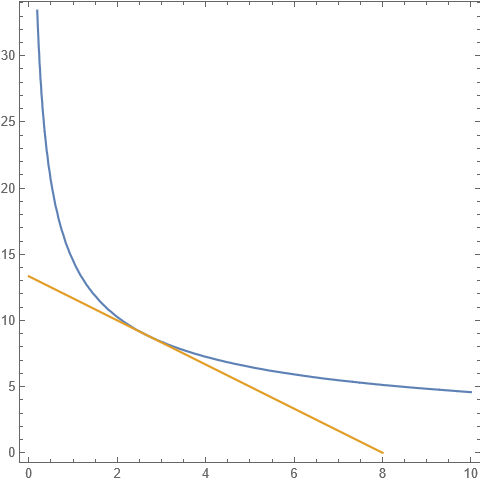You can see what is going on in 2D.
{c*f*h^2 == 4214, f == 8 - (3/5)*h} /. c -> 20
N[Solve[%], 10]
ContourPlot[Evaluate@%%, {f, 0, 10}, {h, 0, 33.4}]
{20 f h^2 == 4214, f == 8 - (3 h)/5}
{{f -> 10.66666898, h -> -4.444448302},
{f -> 2.666665509 + 0.004303314 I, h -> 8.888890818 - 0.007172190 I},
{f -> 2.666665509 - 0.004303314 I, h -> 8.888890818 + 0.007172190 I}}
From Solve you see that the line intersect the surface only in a single point {f -> 10.66666898, h -> -4.444448302} which is not of our interest.
The point of our interest is the other "double" point {f -> 2.666665509 + 0.004303314 I, h -> 8.888890818 - 0.007172190 I} which is in fact complex.
From the plot you can see that even in 2D you can not tell by eyes whether the line intersect the curve or touches it or misses it.
Only Solve tells you that the curve and line misses each other around that point.
I think from all of this follow that you can not do any better depiction in 3D.

